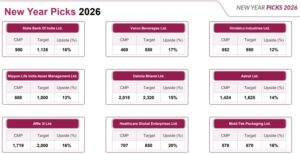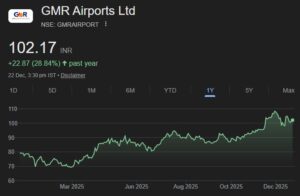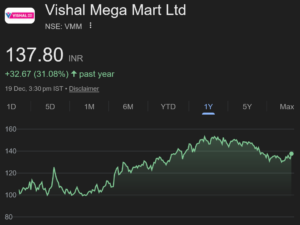
First, the good news. PPFAS Mutual Fund’s AUM as of May 2014 has surged to Rs. 426 crore. This is not surprising given that the retail investors are now making a bee-line for equities.
The performance of the PPFAS Mutual Fund has been average. On a YOY basis, the fund has given a return of 39%. This compares favourably with the Nifty’s YOY return of 28%. However, some of its peers are way ahead. Reliance Small Cap Fund & HDFC Mid-Cap Opportunities, run by whiz-kids Sunil Singhania & Prashant Jain respectively, have surged ahead and given returns of 87% & 57% YOY return respectively. Some other diversified funds like Birla Opportunities Fund, L&T India Value Fund, Tata Equity Fund etc, etc, have also given handsome YOY returns ranging from 50% to 60%.
However, SBI Emerging Markets Fund, run by R. Srinivasan, continues to languish in the dog-house with a YOY return of only 23.3%, underperforming even the Nifty. It is unfortunate that an erstwhile stellar performer has fallen on such hard times. We will have to explore the reasons for this.
Anyway, getting back to PPFAS, in my piece of February 2014, I had raised the pertinent question “Why Does Parag Parikh’s PPFAS Mutual Fund Have So Much Money In Foreign Stocks?” I made three salient points: (i) when the whole World is pumping in billions of dollars into India, why is PPFAS doing the reverse? & (ii) the foreign stocks chosen are of blue-chip behemoths like Nestle, IBM, 3M etc which are operating in mature and saturated markets without as much scope for growth as their Indian counterparts. I pointed out from the share price data that in the past 5 and 10 years, the Indian counterparts of Nestle, 3M etc have given more bang for the buck than their foreign parents because the scope for growth in India is much higher. (iii) I also made a reference to the fact that the strong rupee means that whatever little you eke out of the foreign stocks gets wiped out in the currency conversion.
Since then, NAMOmania has gripped the nation. I don’t have to tell you how Indian stocks are surging. Astute & experienced market watchers like Rakesh Jhunjhunwala & Raamdeo Agarwal are confidently predicting a multi-year bull run for Indian equities.
So, my point about investing in foreign stocks becomes more relevant now.
Parag Parikh, to his credit, does not shy away from these questions. Instead, he tackles them head on in the latest fact sheet (pdf). He answers the questions as follows:
“Given this backdrop, there are obvious questions
a) Is it time for a 100% India allocation?
b) Will not the appreciation of the Rupee work against an internationally diversified portfolio?
PLTVF has the flexibility to be 100% in Indian equities. However we are choosing not to do that at this time. The reasoning is simple. We are not there to time markets or to “maximise” returns. We aim to select high quality businesses available at attractive valuations. An International diversification gives us more choice and at the same time reduces portfolio volatility.
It is true that in any period which is marked by a very strong run in the Indian markets, the PLTVF would lag in performance but this is a choice we have made. We believe that over a cycle or an approximate investment horizon of more than 5 years, the benefit of having invested in international stocks would outweigh the short term under-performance.”
So, there you have it. Parag Parikh has made it clear that he is not going to dance to NAMO’s tune but will stick to his original game plan of investing in foreign stocks, even if there is under-performance in the meanwhile.
The intriguing aspect, however, is that even while Parag Parikh acknowledges that the foreign stocks may cause underperformance, he has gone ahead and increased the allocation to foreign stocks by investing Rs. 12.47 crore in buying Google C Class shares (Google C Class shares are like DVRs – without voting rights. You can read about them here). Maybe, he should have waited for NAMOmania to subside before doing that.






Parag Parikh says – ” An International diversification gives us more choice and at the same time reduces portfolio volatility.”
What he does not mention is – this portfolio is designed not to win and not to lose, therefore the lack of volatility. But there’s worse, if he intends to protect the money of his investors without any gains, and has chosen this strategy for doing so, it’s more risky than investing 100% in Indian equities.
Mutual funds charge people their Annual Maintenance Charges and entry and exit loads that have no justification, regardless of the performance of their funds. In fact, as far as the expenses are concerned, they are way more expensive than brokers.
Here he means- that the fund is designed to ‘optimize’ profits and not to ‘maximize’ it. The difference between the 2 is- you optimize profits by taking very little risk and volatility. When you mazimize profit it means the greater the risk, greater the profits.. high risk high returm. But in the PPFAS MF with minimum risk he is able to optimize great profits. So in times of a downturn also, this fund will be able to ‘optimize’ profits while some other funds who have taken high risk will lose out quite heavily. (see quantitative indicators like beta, standard deviation, sharpe ratio of funds across this category and compare.. You will see the difference)
Hi Neil – I was not talking about gains, just volatility and risk. At present, the so-called “international stocks” are far more dangerous than Indian stocks, and this is why we have a massive fund inflow from overseas. Do note that the chap running the fund is using these stocks to “optimize”, his fancy term for safety. Sadly, neither are they safe, nor will they provide good returns unless the chap is planning on short term returns.
Hi abhi- i think if you are using a bottom up approach to stock picking, then you will see none of the international stocks that have been picked is so called’dangerous’. Valuation wise they are cheap and good dividend paying. The fund has hedged the currency and are in fact making 7% on the currency premium+ you can add 3% dividends.. and BOOM you have 10% tax free returns without the stock moving 1 cent. Whatever additional capital gains is on top of this 10%!! Its a safe and common sense approach which is anything but dangerous. This is called optimization!! You have to be stock specific so you dont need to worry about overall markets being ‘dangerous’.. which btw is just your opinion.
So a 10% tax free return is guaranteed by this fund ?
Funny to see the word “fancy” in the article. Parag Parikh always uses this word to describe euphoria – something of this sort – “when you pay a fancy price for a fancy company in a fancy sector and when the fancy ends, you are left with a fancy loss “
PPFAS should Look at Avanti Feeds – Shrimp company this quarter – The company is at less than 10x earnings at 750, potential earnings for FY-15 is 110 rupees/share at least, stock could get re-rated at a better multiple and with the growth – see this at 2000. Farmer + secular growth story – NAMO stock